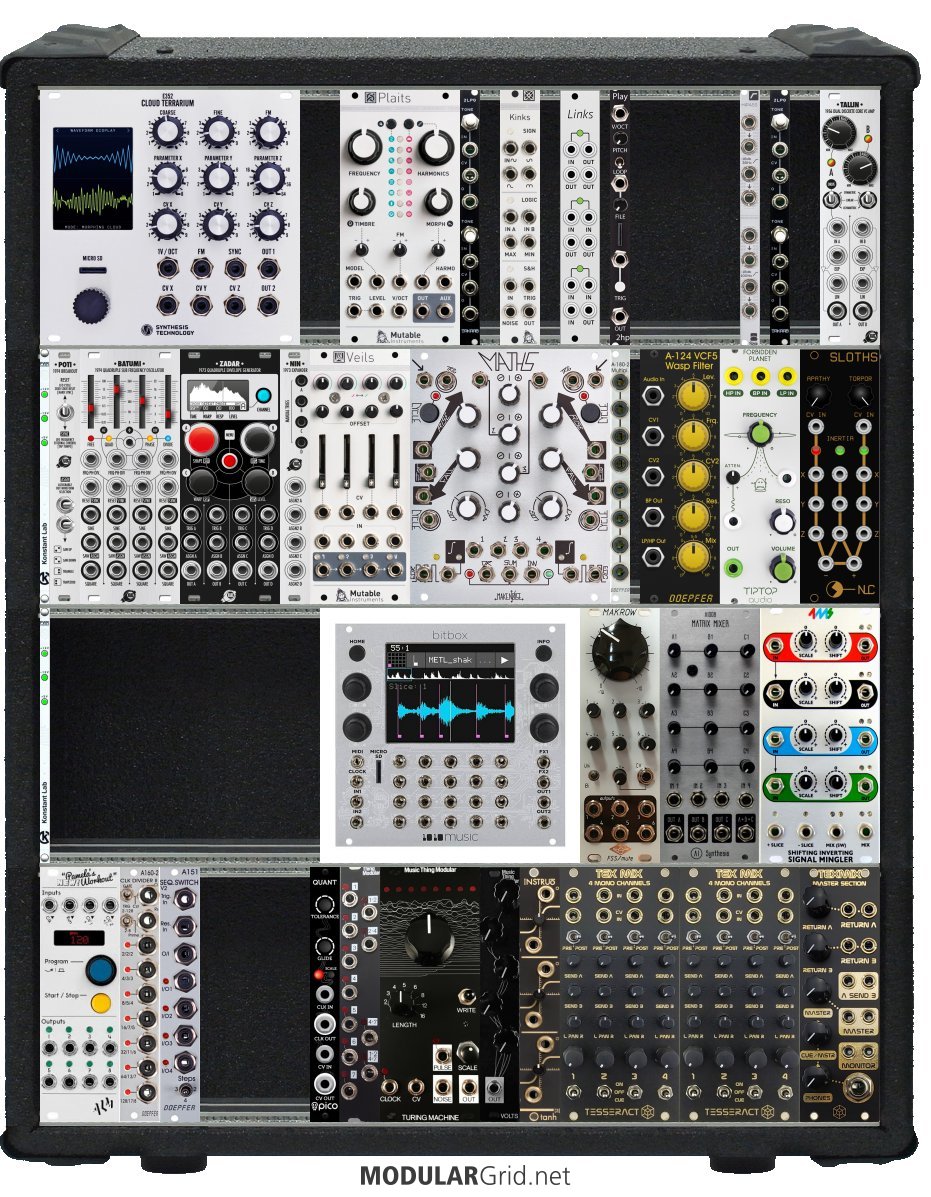some thoughts:
don't skimp on case or power, especially if you find modules to be expensive - the case protects them and the power gives them life!
1 it's extremely well priced for a 6u/8xhp case to be honest - personally I prefer the find the modules you want and the modules that you need to support them and then find the case to fit them in approach rather than buy a random tiny case and try to cram functionality in by using micro versions of modules etc
the psu looks to be a standard meanwell power supply - great if you are only using low powered modules - but not so good if you want to use something high powered - the fact that the builder states the number of power headers, but no the available power may or may not be a cause for concern - I would at least ask before buying
2 I was looking at cases on musicstore the other day - the intellijel palletes are very expensive - iirc the 62hp is almost the same price as a tiptop mantis... the 104 is 90€ more - and it reduces your choice of other modules - want midi - get the intellijel midi interface because it works with the case, want a mixer - get an intellijel one etc etc etc - now there's nothing wrong with these modules - but it does reduce your choice - and as modular is to some extent about having unlimited freedom of choice - it seems counter-intuitive to limit yourself in this way
if you substitute 1 hp 3 u for 3hp of 1 u (which is probably about right in terms of functionality) you can roughly work out how a 1u row compares to a 3u row in terms of what you can put in it - I mostly build my own cases (this is actually a decent option if you are on a budget and can use a saw, a drill and a screwdriver) and have never contemplated a 1u row - the hardware costs the same as a 3u row - but only get 1/3rd at best the functionality in it - and there are almost no modules in 1u that are not available somehow in 3u
personally I prefer the mantis over either of these cases - but that may just be me, partly because the mantis power supply is clean enough for video (less ripple up to much higher frequencies) whereas by all reports the intellijel supplies are not so quiet - you would have to wait a bit though as they are out of stock everywhere - deliveries appear to be next month, but... - and again it does not have any built in utility - which I personally see as a good thing!
you have to weigh up the price of the included utilities - check you don't have to add 1u modules to use them (and if you do midi and outputs - I'm looking at you, here - decide if you actually need them!!) midi yes if you want to use midi, but outs really depends on where you are as to do you need to have this module - in europe probably not, in US almost definitely, other countries may vary
3 not many people can afford to go out and fill a case with modules on day 1 - and it's not often recommended either - whilst most modules are relatively simple to understand, lots of them all at once is not - and those that do need a bit more time generally fail to get it when purchased in huge batches - so starting with a few modules and learning them in depth before expanding is a great idea
some stackcables might be a good idea - or a few headphone splitter type passive multiples
the often recommended starting set of:
a sound source, a sound modifier, a modulation, a way to play and a way to listen are mostly covered with that combination of modules
modulation is a bit on the light side - but will be fine to start - both the other modules have atttenuators on most if not all their modulation inputs and plaits has an on board lfo
how to play = outs of beads into audio interface via 1/4"->1/8" cables
if it clips buy some cheap passive attenuators - 2hp Trim for example - and try to reduce the level that way - if that still clips then you may need an output module - attenuators are always useful to have anyway
veils is a good choice of vca - quad cascading etc etc
if it was me I would next want a better modulation source (I like Maths as a first modulation source*) and some basic utilities next (links, kinks, shades or similar functionality in different modules - wmd/ssf toolbox for example goes a long way to covering a lot of basic utilities) and then possibly a stereo mixer - before adding any more sound sources or modifiers
- see the illustrated manual for more information - 32 self-patching ideas - a brilliant primer for modular synthesis in general
"some of the best base-level info to remember can be found in Jim's sigfile" @Lugia
Utility modules are the dull polish that makes the shiny modules actually shine!!!
sound sources < sound modifiers < modulation sources < utilities


